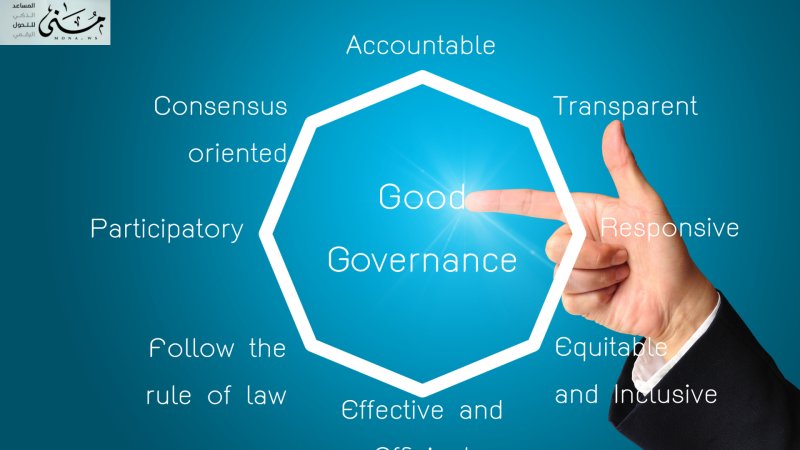Corporate innovation is no longer just an option, but an urgent necessity for any organization seeking to survive in a rapidly changing market. It represents the ability to adopt new ideas, improve operations, and develop competitive products and services that enhance growth and sustainability.
In this article, we review the importance of corporate innovation, its most prominent components, and the challenges it faces, in addition to the tools and systems that can be relied upon to enhance the culture of innovation within institutions.
What is corporate innovation?
Corporate innovation is the ability of companies and organizations to adopt new ideas, improve processes, and develop products or services in a creative way that ensures growth and sustainability.
With the rapid changes in markets, innovation has become an imperative, not just an option. It is the factor that distinguishes successful companies from others. When organizations implement innovative strategies, they enhance their operational efficiency, improve customer experience, and create new opportunities for expansion.
Components of Successful Corporate Innovation
To achieve innovation effectively, the organization must have a supportive environment and modern tools that help adopt new ideas. The most prominent components of institutional innovation are:
Supportive organizational culture
Innovation cannot thrive in a static environment. Organizations need a work culture that encourages creativity and allows employees to experiment without fear of failure. Large companies like Google and Amazon provide their employees with the space to experiment and think freely, which leads to new and innovative solutions.
Technology infrastructure
Institutional innovation cannot be achieved without advanced systems that help manage processes and ideas. The most prominent systems that can be adopted are:
DocSuite: A digital platform for managing documents and organizing internal communications, which contributes to enhancing innovation by facilitating the flow of information and making smart decisions.
Trello and AsanaProject management tools that help teams organize and execute ideas efficiently.
Power BI and TableauData analysis systems that enable companies to make decisions based on clear and accurate insights.
Flexible Management and Strategic Planning
Leadership in the organization must be able to adapt to changes, open up space for new ideas, and support innovation at all management levels. Companies that adopt the flexible management styleAgile, like tech startups, is more successful at developing innovations quickly and efficiently.
Process Innovation vs. Product Innovation
There are two main types of corporate innovation:
Innovation in operations: Improving internal production and service methods to become more efficient, for example, using artificial intelligence to analyze customer data provides accurate insights that help better customize services to them.
Product innovationDeveloping new products or improving existing products to better meet market needs, an example of this is the evolution of smartphones, where companies rely on continuous innovation to add new features that attract customers.
Challenges of Corporate Innovation and How to Overcome Them
Despite its importance, institutional innovation faces several challenges, including resistance to change, lack of resources, and bureaucratic constraints. Overcoming these challenges requires:
- Providing an environment that encourages informed risk-taking, so that new ideas are tried without fear of failure.
- Use analytics and decision-making tools, such as artificial intelligence systems and data management platforms, to ensure that innovation is based on accurate data and not just intuition.
- Enhance collaboration between different teams, using platforms such as:Slack and Microsoft Teams, where constant communication helps develop ideas and improve their execution.
To make innovation a core part of your strategy, follow these steps:
Define a clear vision for innovationInnovation must be part of the organization's strategic objectives, with support from senior management.
Adopting modern technology:Using analytics and artificial intelligence tools, such as:DocSuite, to make work easier and improve performance.
Empowering employeesEncouraging teams to present ideas, and providing training programs to develop creative thinking skills.
Performance and results measurement: Use of KPIs (KPIs) to track the impact of innovation on the organization, and improve processes based on the available data.
Innovation is not just a passing process, but an ongoing strategy that requires commitment from everyone within the organization. Companies that invest in innovation achieve sustainable growth and stay ahead of the competition, by adopting modern systems such as:DocSuite, and fostering a culture of innovation, any organization can achieve unprecedented success in the business world.
:
The role of artificial intelligence in enhancing institutional innovation
Artificial intelligence has become an essential part of innovation strategies within organizations, contributing to the analysis of big data, discovering new opportunities, and improving decision-making processes.
Through tools like machine learning and sentiment analysis, organizations can predict market trends, and develop products that effectively meet customer needs. For example, large companies rely on AI to automate customer service, which enhances the efficiency of operations and creates a more distinctive user experience.
Digital Transformation as Fuel for Corporate Innovation
Digital transformation is the backbone of corporate innovation, enabling organizations to improve their operations and increase efficiency by adopting modern technologies such as cloud computing and the Internet of Things. When companies digitize their operations, they open the door to continuous innovation, as they become able to quickly adapt to changes in the market.
Modern document management and process automation systems can be relied upon, reducing operational complexity and supporting a more flexible work environment. In addition, innovation in business models can have a significant impact on the success of organizations, helping them stand out from competitors and create new value.
Some companies have embraced the subscription model, such as Netflix, while others have relied on sharing economy platforms, such as Uber and Airbnb. Innovation in the business model is not limited to technology alone, but also includes rethinking how services are provided or products are distributed in more efficient and sustainable ways.
The impact of the work environment on stimulating institutional innovation
The work environment plays a key role in fostering innovation within an organization, as it should encourage collaboration and provide employees with the tools to experiment with their ideas without restrictions.
Some of the leading innovation companies rely on open workspaces, multidisciplinary teams, and incentive programs that foster creativity.
For example, Google gives its employees dedicated time to work on creative projects outside of their core work, which has led to innovative products like Gmail and Android.
The relationship between institutional innovation and knowledge management
Knowledge management plays a vital role in supporting corporate innovation, ensuring that knowledge and expertise within an organization are effectively used to generate new ideas and improve processes. Innovation does not come out of nowhere, but rather relies on available information, data analysis, and the exchange of expertise between individuals and different teams.
Organizations that invest in knowledge management systems, such as:DocSuite can facilitate access to information and provide a more collaborative work environment, which enhances innovation across all its departments. Knowledge management contributes to institutional innovation by:
Knowledge storage and transferDocumenting processes, lessons learned, and past experiences helps prevent repeating mistakes and enables teams to build on past successes.
Stimulate creativity by sharing ideasWhen employees have a platform to share their ideas, such as knowledge management systems or digital collaboration tools, it creates a dynamic environment that drives innovation forward.
Analyze data to make informed decisions.By using data analytics tools, organizations can extract new patterns and trends that may lead to the development of innovative strategies.
Knowledge management is not just an organizational process, but an essential element in creating an environment that supports creative thinking and drives the organization towards developing new and sustainable solutions.
Comparison between corporate innovation and knowledge management
|
The element |
Corporate Innovation |
Knowledge Management |
|
Definition |
The process of adopting new ideas and turning them into products, services, or organizational improvements that enhance an organization's growth. |
A strategic approach to collecting, organizing, and distributing knowledge within an organization to enhance decision making and improve performance. |
|
Main objective |
Develop new solutions, enhance competitiveness, and achieve sustainability in the business environment. |
Ensure knowledge is best employed to support internal operations and increase efficiency. |
|
Relationship to creativity |
It relies mainly on creativity and the ability to find innovative solutions to problems. |
Focuses on storing and transferring knowledge to ensure continuity of learning and stimulate creative thinking. |
|
Impact on operations |
Improves work methods and develops new products and services. |
Reduces knowledge gaps and helps in making decisions based on previous experiences and expertise. |
|
Helpful Tools |
Systems likeDocSuite, data analytics tools, AI technologies, and project management tools. |
Knowledge management systems, such asDocSuite, collaboration platforms like SharePoint, and research and documentation tools. |
|
Challenges |
Resistance to change, lack of resources, and lack of a clear vision for innovation. |
Difficulty in collecting and continuously updating knowledge, and resistance to sharing knowledge within teams. |
|
Impact on the organization |
It enhances growth, increases competitiveness, and opens new market prospects. |
It helps in continuous learning and improving operational processes, supporting long-term innovation. |
Corporate innovation and knowledge management are closely intertwined, as innovative organizations rely on knowledge management to ensure the continuous flow of information and expertise, helping them develop new solutions more effectively.
Combining the two enhances organizational performance, and helps achieve a strong and sustainable competitive advantage.
Corporate innovation is no longer a luxury, but rather a critical factor in the success and continued competitiveness of organizations. By building a culture that supports creativity, investing in modern tools, and relying on artificial intelligence and digital transformation technologies, companies can achieve sustainable progress.
Corporate innovation is not just a passing idea, but an ongoing journey that requires commitment and strategic planning to ensure long-term success.
 تبني أفكار جديدة وحسن عملياتك مع الابتكار المؤسسي.
تبني أفكار جديدة وحسن عملياتك مع الابتكار المؤسسي.












Comments
Add New Comment